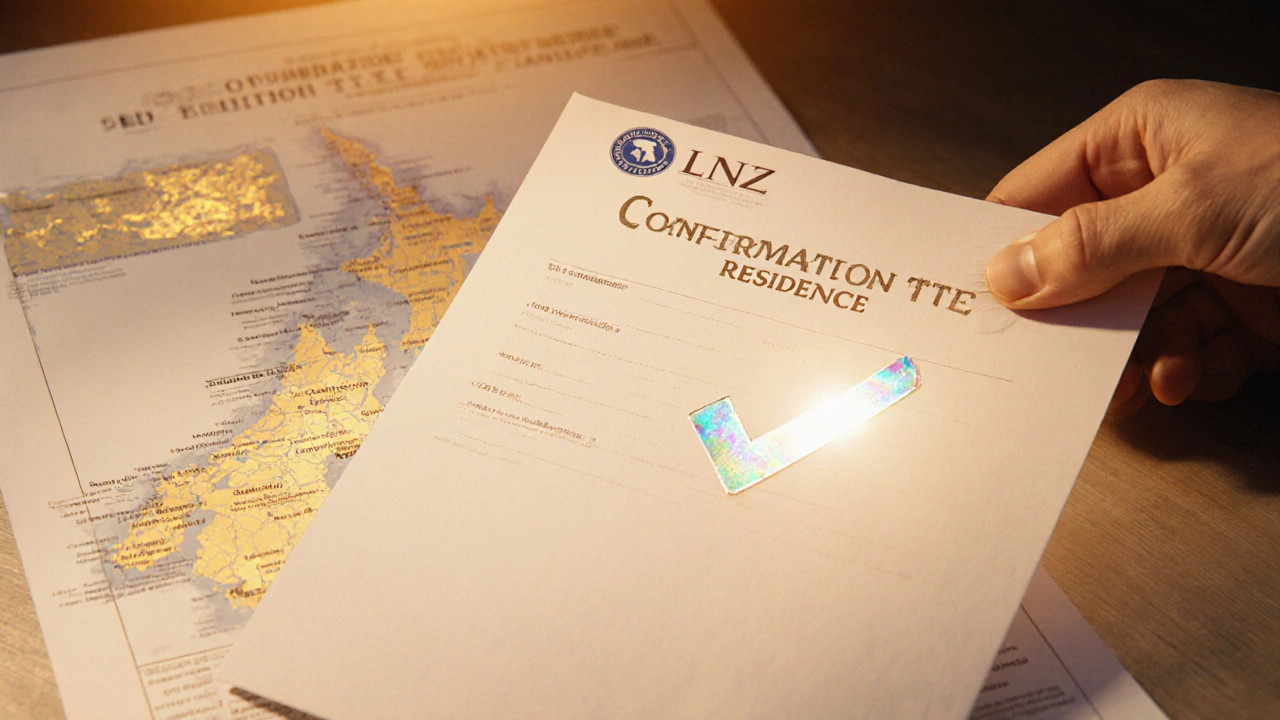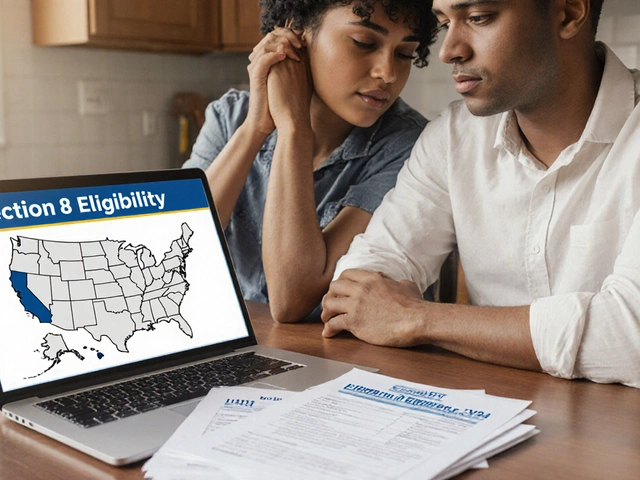How to Verify Your Residency Status for Property Registration in New Zealand

New Zealand Residency Status Calculator
Determine your residency category and associated tax implications for property transactions in New Zealand.
Residency Category
Key Requirements
Tax Implications
| Category | Land Tax Rate | Stamp Duty | Borrowing Limit |
|---|---|---|---|
| Resident | 0.5% | None | 80% LVR |
| Non-Resident | 0.875% | 2% | 60% LVR |
| Overseas Person | 0.875% (with consent) | 2% + $10,000 fee | 50% LVR (often stricter) |
When you’re about to buy, sell, or register a property in New Zealand, knowing your Residency status is the legal classification that determines tax obligations, borrowing limits, and eligibility for certain property concessions can save you from costly surprises.
In this guide we’ll walk through the exact steps you need to check residency status, explain the different categories the government uses, and show you how each one affects your property transaction. By the end you’ll be able to pull the right paperwork, query the right online portals, and understand what the numbers on your title really mean.
Key Takeaways
- Residency status is determined by the Inland Revenue Department (IRD) and confirmed through LINZ.
- There are three main categories: New Zealand resident, non‑resident, and overseas person (OP).
- Each category triggers different land‑tax rates, stamp‑duty exemptions, and borrowing limits.
- You can verify your status online via the IRD MyIR portal or by requesting a Confirmation of Residence from LINZ.
- Keep your documents up to date - missing updates are a common reason for delayed registrations.
Understanding the Residency Categories
New Zealand’s tax and property framework splits people and entities into three buckets. Knowing which bucket you fall into is the first step in any registration process.
New Zealand resident is defined as someone who has been present in the country for at least 183 days in any 12‑month period, or who has a permanent place of abode here. Residents enjoy the lowest land‑tax rates, qualify for the first‑home buyer’s tax credit, and can borrow up to 80% of the property value from most lenders.
Non‑resident refers to individuals or companies that do not meet the resident test. They face a higher land‑tax surcharge (currently 75% of the standard rate) and are ineligible for most buyer incentives.
Overseas Person (OP) is a legal classification used by the Overseas Investment Act. An OP can own residential land only under strict conditions, often requiring a minimum 25% equity investment and a consent from the Minister of Finance.
These definitions are not just semantics - they directly impact the numbers you’ll see on a Property title issued by Land Information New Zealand (LINZ). A title will carry a "Residency Status" field that must match your verified status before the transaction can be finalised.
Step‑by‑Step: How to Check Your Residency Status
- Gather core documents: passport, NZ driver’s licence or visa, utility bills (to prove residence), and any tax returns filed with the Inland Revenue Department (IRD).
- Log into the IRD MyIR portal. If you don’t have an account, register using your IRD number and a verified email address.
- Navigate to “Personal Details” → “Residency status”. The system will display one of the three categories, plus the date of the last verification.
- If the portal shows “Not verified” or you suspect an error, request a Confirmation of Residence (CoR) from IRD. This is a PDF that can be downloaded within 5 business days.
- For corporate entities, the responsible officer must submit a “Company Residency Declaration” to IRD, attaching the latest audited financial statements.
- Once you have the IRD confirmation, upload the document to the LINZ online title portal under the “Residency Verification” section.
- LINZ will cross‑check the IRD data, and if everything aligns, the system will automatically update the “Residency Status” field on the title.
- Print the updated title or request a certified copy. Keep both the IRD CoR and the LINZ title in a safe place - future sales will require these documents again.
Most people complete the whole process in under 48 hours, provided they have the right documents ready. Delays usually come from missing proof of physical presence (like utility bills) or from corporate entities that haven’t filed the latest annual return.

Impact on Land Tax and Stamp Duty
Once your residency status is locked in, the next question is: how does it affect the taxes you’ll pay?
| Residency Category | Land Tax Rate | Stamp Duty (if any) | First‑Home Buyer Credit | Borrowing Limit |
|---|---|---|---|---|
| New Zealand resident | 0.5% of land value | None | Up to $5,000 | Up to 80% LVR |
| Non‑resident | 0.875% (75% surcharge) | 2% of purchase price | None | Up to 60% LVR |
| Overseas Person (OP) | 0.875% (subject to consent) | 2% + consent fee ($10,000) | None | Up to 50% LVR (often stricter) |
The numbers above are pulled from the latest Ministry of Business, Innovation & Employment (MBIE) fiscal summary. Note that rates can change with the annual budget, so always verify the current table before finalising a deal.
Common Pitfalls and How to Avoid Them
- Out‑of‑date documents: IRD automatically flags a residency status as “expired” after 12 months of no activity. Refresh your CoR annually if you hold land.
- Mixing up “non‑resident” with “overseas person”. The OP label carries additional consent requirements under the Overseas Investment Act.
- Assuming a visa type determines residency. Only physical presence and domicile matter for tax purposes.
- Relying on a solicitor’s verbal confirmation without a written CoR. Always request the PDF version.
- Failing to update the title after a change in status (e.g., becoming a resident after a work visa). Submit a “Change of Residency” form to LINZ promptly.
By checking these boxes early, you sidestep the most frequent delays that push settlement dates back by weeks.

Tools and Resources You’ll Need
Below is a quick checklist of online portals, forms, and contact points you’ll likely use.
| Tool / Resource | Purpose | Link / Contact |
|---|---|---|
| IRD MyIR portal | View and download residency status | ird.govt.nz/myir |
| LINZ Title Online | Upload residency verification, view title details | linz.govt.nz/landtitles |
| Confirmation of Residence (CoR) form | Request official proof from IRD | Call IRD 0800 555 555 |
| Overseas Investment Act consent | Apply for OP status | MBIE - Overseas Investment Office |
| Land Tax Calculator | Estimate tax based on status | Available on MBIE website |
All the links above are New Zealand government services, so they’re free and secure. Keep a screenshot of each confirmation for your records.
What Happens After Verification?
Once LINZ updates the title, the residency status field becomes part of the legal record. Any subsequent sale will automatically pull this information, meaning you won’t need to repeat the process unless your circumstances change.
However, if you later become a resident after holding the property as a non‑resident, you can file a “Title Amendment” to lower your land‑tax rate retroactively for the portion of the year you qualified. This can shave several thousand dollars off your annual bill.
For investors, maintaining accurate residency data also protects you from the “excessive ownership” test under the Overseas Investment Act, which can trigger forced sales if you exceed the 25% equity threshold.
Next Steps for Different Scenarios
- First‑time homebuyer (resident): Verify status via MyIR, upload CoR to LINZ, then apply for the First‑Home Buyer Credit.
- Foreign investor buying rental property: Obtain OP consent, confirm status with IRD, be prepared for higher land‑tax rates.
- Company acquiring commercial land: Submit a corporate residency declaration, ensure the director’s residency matches the company’s claimed status.
- Current owner moving abroad: Re‑assess status each year, because becoming a non‑resident changes tax liabilities immediately.
Choose the path that matches your situation and follow the checklist; the process is straightforward once you have the right documents.
How long does it take to get a Confirmation of Residence from IRD?
The IRD typically processes a CoR request within five business days if all supporting documents are attached. Delays occur mainly when the applicant’s address history is incomplete.
Can I change my residency status after buying a property?
Yes. You can submit a Title Amendment to LINZ once your IRD status updates. The amendment can lower your land‑tax rate retroactively for the months you qualify as a resident.
Do I need an OP consent to own a house in Auckland?
Only if you are classified as an overseas person. Residents and New Zealand citizens can buy without consent. An OP must meet the 25% equity rule and obtain ministerial approval.
What documents prove physical presence for residency?
Utility bills, rental agreements, bank statements, or a driver’s licence showing a New Zealand address for at least 183 days in the past 12‑month period.
Is land tax automatically calculated after I upload my residency proof?
Once LINZ links your CoR to the title, the land‑tax rate is applied to your annual tax bill. You’ll receive a notice from the Inland Revenue Department outlining the amount due.









Write a comment